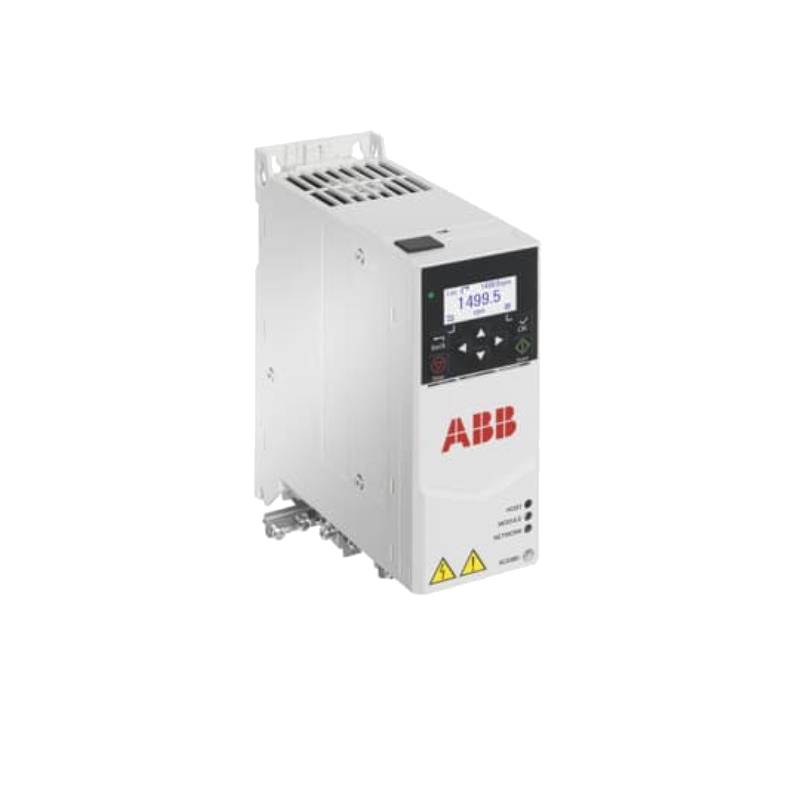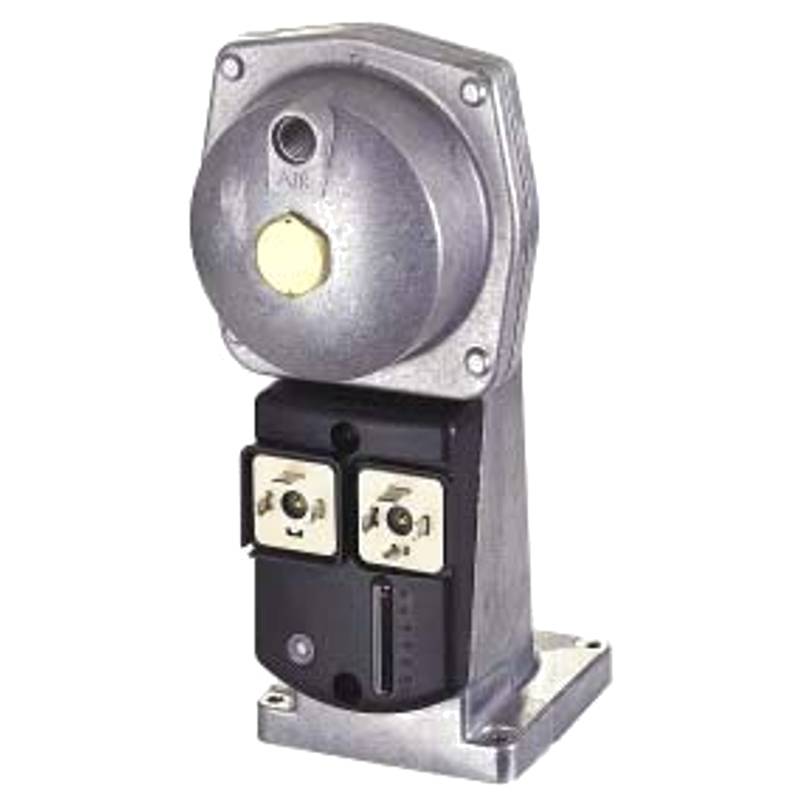
The Delta ECM-E3M-CA0807SSE High Power Servo Safety Drive System represents a pinnacle of electromechanical control, engineered for demanding industrial automation applications requiring precision, speed, and robust safety integration. This advanced system delivers exceptional performance with a nominal voltage of 200-240V AC and a continuous output current of 7.0A, peaking at 20.0A. Its impressive peak output power of 1.5kW ensures ample capacity for high-torque applications. The integrated safety features, including Safe Torque Off (STO) functionality conforming to IEC 61508 SIL 2 and ISO 13849-1 PL d, provide critical operational protection. Furthermore, the drive boasts a compact form factor, with dimensions of 50mm x 200mm x 170mm, facilitating space-efficient panel integration.
Product Specifications
| Feature | Specification |
| :------------------- | :------------------------------------------------ |
| Model Number | ECM-E3M-CA0807SSE |
| Nominal Voltage | 200-240V AC |
| Continuous Current | 7.0A |
| Peak Current | 20.0A |
| Peak Output Power | 1.5kW |
| Safety Certifications| IEC 61508 SIL 2, ISO 13849-1 PL d |
| STO Response Time | < 5ms |
| Dimensions (W x H x D)| 50mm x 200mm x 170mm |
| Communication | EtherNet/IP, Modbus TCP, CANopen (Optional) |
| Encoder Feedback | Supports Incremental, Absolute (e.g., EnDat 2.2) |
Core Features & Market Positioning
The Delta ECM-E3M-CA0807SSE distinguishes itself through its sophisticated safety architecture, seamlessly embedding functional safety directly into the servo drive. This eliminates the need for external safety relays in many applications, simplifying system design and reducing component count. The drive's high current and power ratings position it as a superior choice for heavy-duty machinery and automated production lines where dynamic acceleration and deceleration are critical. Its advanced control algorithms ensure precise positioning and smooth motion profiles, crucial for applications like robotic assembly, packaging machinery, and CNC machining. The inclusion of multiple industrial communication protocols enhances its versatility and integration capabilities within diverse automation networks.
Key Application Scenarios
This high-power servo safety drive system excels in scenarios demanding both robust performance and stringent safety standards. It is ideally suited for automated material handling systems, where precise control over conveyor speeds and robotic arm movements is paramount, and worker safety is a primary concern. In the packaging industry, the ECM-E3M-CA0807SSE can drive complex packaging machines that require high-speed, accurate manipulations of products and materials. Furthermore, its capabilities are essential in the semiconductor manufacturing sector for precision motion control in wafer handling and lithography equipment, where even minor deviations can be costly. The drive's integration of safety features makes it a compelling solution for applications involving human-robot collaboration.
Practical System Integration Guidance
Integrating the Delta ECM-E3M-CA0807SSE involves careful attention to power, control, and safety wiring. The drive requires a stable 200-240V AC power supply, with appropriate fusing and circuit protection. Motor connections should be made using shielded, twisted-pair cabling to minimize electromagnetic interference. For encoder feedback, ensure the chosen feedback type (e.g., incremental or absolute) is correctly wired to the designated terminals, paying close attention to signal integrity. The Safe Torque Off (STO) input should be connected to a safety-rated control signal from a safety PLC or safety switch, adhering strictly to the safety circuit design guidelines to ensure compliance with SIL 2 and PL d ratings. Configuration of drive parameters, including motor tuning, operational limits, and communication settings, is typically performed using Delta's proprietary software tools, such as the Delta Drive Assistant, via the integrated communication ports.
Operation and Risk Mitigation
Operating the Delta ECM-E3M-CA0807SSE requires adherence to established safety protocols. The STO function is a critical safety mechanism that prevents the servo motor from generating torque when activated, ensuring a safe state during emergency stops or maintenance. Proper configuration of acceleration and deceleration ramps is vital to prevent mechanical stress and ensure smooth operation, thereby mitigating potential equipment damage and reducing the risk of unexpected movements. In the event of a fault, the drive will typically display a specific error code on its integrated display or through the communication interface. Common troubleshooting steps involve verifying power supply stability, checking all wiring connections for proper termination and continuity, and reviewing the drive's parameter settings against the application requirements. Consulting the detailed user manual for specific error code interpretations and remediation procedures is essential for effective risk mitigation.
Scalability & Long-Term Value
The Delta ECM-E3M-CA0807SSE offers significant scalability and long-term value through its versatile communication options and compatibility with Delta's broader automation ecosystem. It can be readily integrated into existing SCADA systems or IIoT platforms via standard industrial protocols like EtherNet/IP, enabling remote monitoring, diagnostics, and data acquisition for predictive maintenance and process optimization. The drive's modular design and support for various encoder feedback types ensure flexibility when upgrading or adapting to new machine requirements. Furthermore, Delta's commitment to ongoing firmware updates and support ensures that the ECM-E3M-CA0807SSE remains a relevant and high-performing component in evolving industrial automation landscapes.
Frequently Asked Questions (FAQs)
1. What is the primary advantage of the Delta ECM-E3M-CA0807SSE drive?
This drive integrates advanced safety functions directly, reducing external component needs. It offers superior motion control for high-power demands in industrial settings. Its robust design ensures reliability and longevity.
2. What safety certifications does the ECM-E3M-CA0807SSE hold?
The drive meets IEC 61508 SIL 2 standards for functional safety. It also adheres to ISO 13849-1 PL d, ensuring high safety performance. These certifications are critical for risk mitigation.
3. Can this drive be used with different types of motors?
Yes, it supports various motor types through advanced tuning parameters. It is compatible with incremental and absolute encoders for precise feedback. Always consult the manual for specific motor compatibility.
4. What communication protocols are supported by the ECM-E3M-CA0807SSE?
It supports EtherNet/IP and Modbus TCP for seamless network integration. Optional modules allow for CANopen communication. This flexibility aids in system connectivity.
5. How does the Safe Torque Off (STO) function work?
STO prevents motor torque generation when activated. It is a vital safety measure for emergency stops. This function ensures a safe state quickly.
6. What is the STO response time for this drive?
The drive features a rapid STO response time of less than 5 milliseconds. This quick reaction is crucial for safety compliance. It minimizes potential hazards effectively.
7. What are the physical dimensions of the drive?
The ECM-E3M-CA0807SSE has compact dimensions of 50mm x 200mm x 170mm. This allows for efficient installation in control cabinets. Its size is ideal for space-constrained applications.
8. How is the drive commissioned and configured?
Configuration is typically done via Delta's specialized software tools. Motor tuning and parameter settings are adjusted for optimal performance. Proper setup is key to system operation.
9. What is the peak output power of this servo drive?
The drive delivers a substantial peak output power of 1.5kW. This capacity is suitable for demanding, high-torque applications. It ensures sufficient power for dynamic tasks.
10. How does this drive contribute to IIoT integration?
Its standard communication protocols enable easy connection to IIoT platforms. Data can be monitored remotely for diagnostics and optimization. This facilitates smart manufacturing capabilities.






















